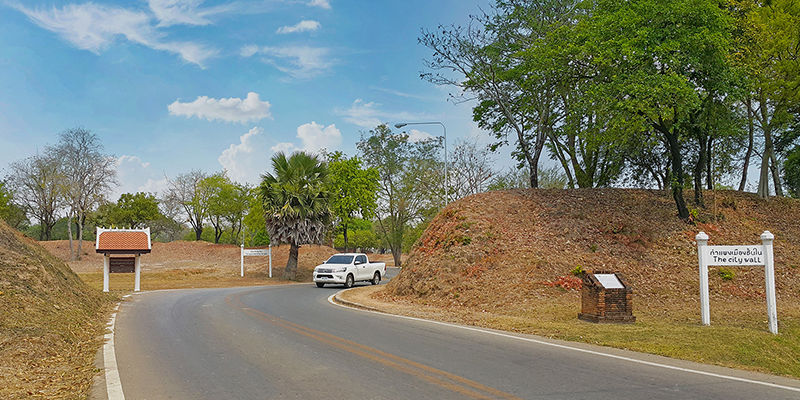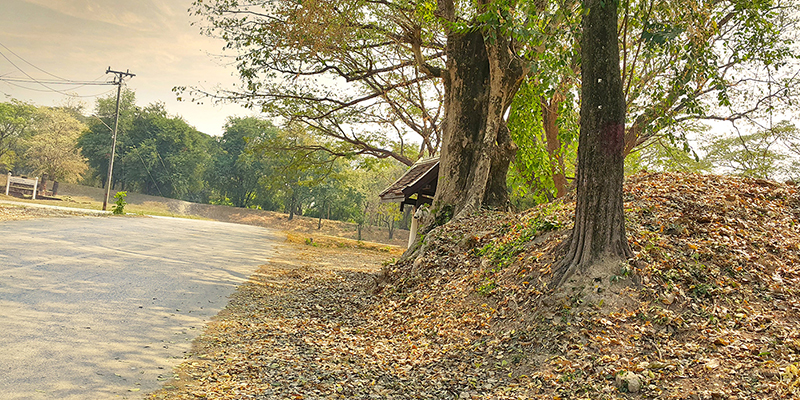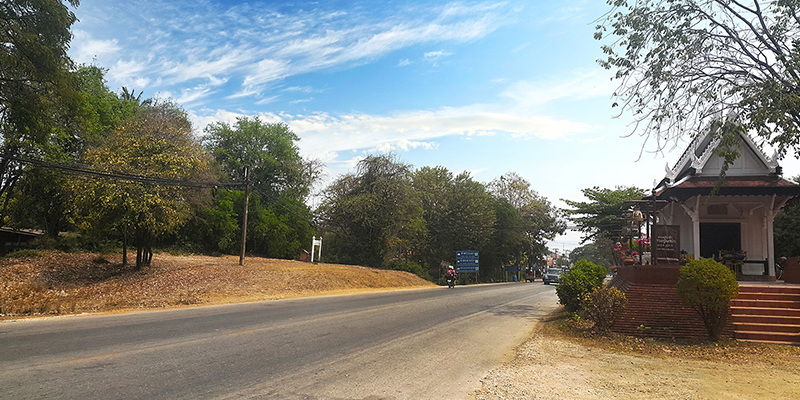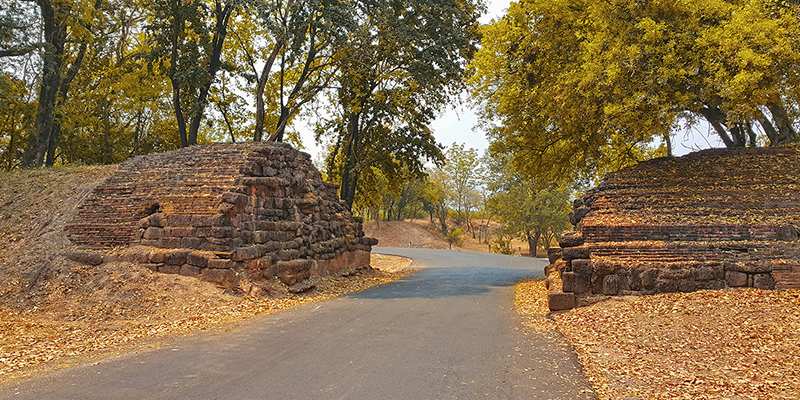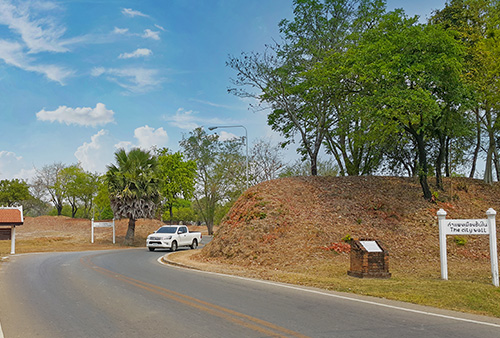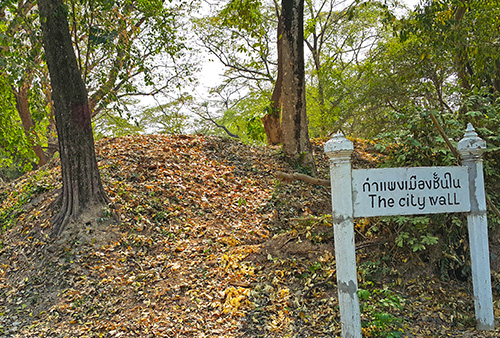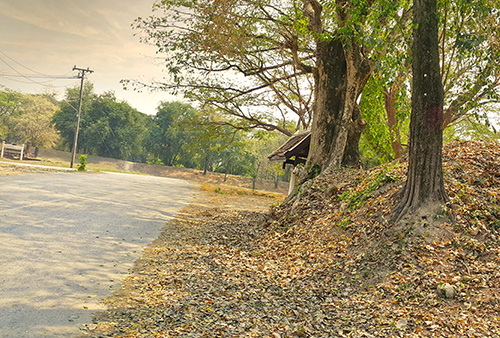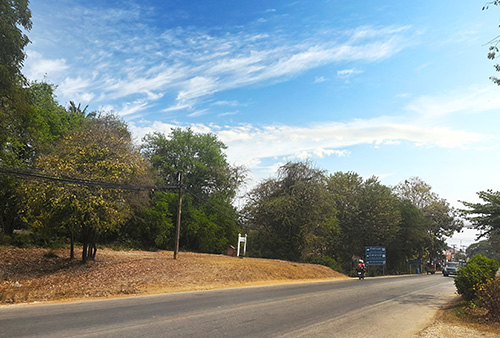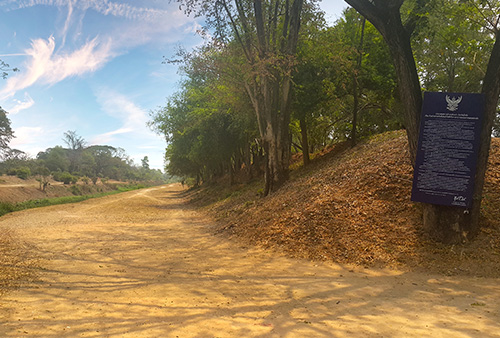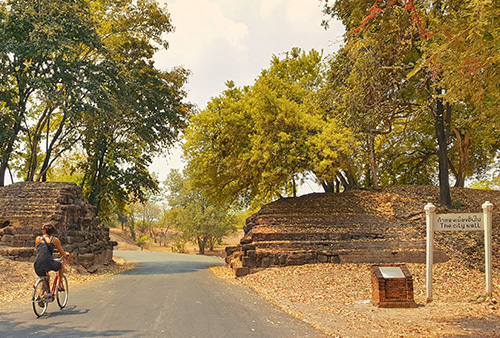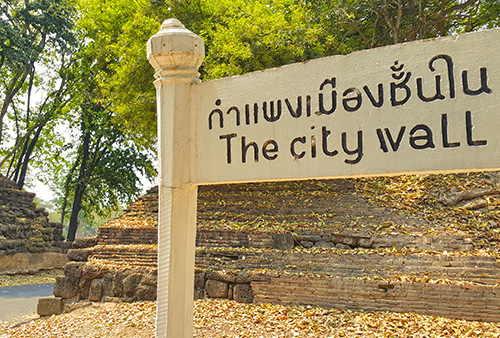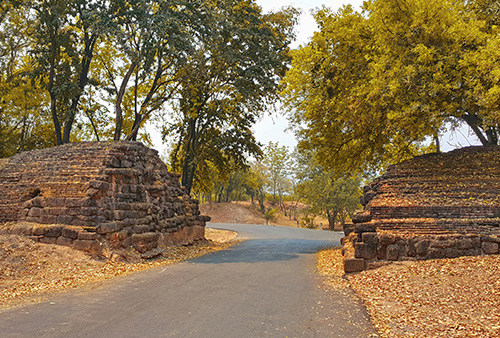City walls and gates
Three Thousand Four Hundred Fathoms
The wise wisdom of the Sukhothai ancestors demonstrates the construction of the wall that surrounded the ancient Sukhothai city. The inscription of King Ramkhamhaeng the Great indicated that "Around this city of Sukhothai reaches to three thousand four hundred fathoms." and "This city of Sukhothai has four gates exceeding great." When considering the condition of the ancient city Sukhothai wall that remains to discover, it matched each other.
It assumed that originally the Sukhothai city walls had only one layer inside. The two layers outside were built later. There are excavations of Chinese wares having the same age as the early Ayutthaya period in the outer city wall. It supports this idea very well assuming that the wall must be three layers separating by the moat according to the principle of irrigation focusing on drainage more than anything else
